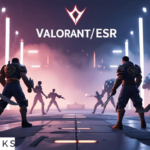Matchmaking in Online Games
Matchmaking in video games is a system that automatically pairs players in online multiplayer matches.
It considers factors like skill level, internet connection, and game mode preferences to create fair and enjoyable games.
Have you ever wondered why some matches feel perfectly balanced while others seem unfair?
Matchmaking is the reason behind it. This system works behind the scenes to ensure everyone has a competitive and fun gameplay experience.

The Evolution of Matchmaking
Matchmaking has been around for a long time. In traditional sports and board games, players were grouped based on skill to ensure fair competition.
Early video games featured simple matchmaking through lobby systems where players manually selected their opponents.
As online gaming expanded in the late 1990s and early 2000s, developers introduced more advanced matchmaking.
One of the earliest examples of skill-based matchmaking came with Halo 2 in 2004, which used ranking to pair players of similar abilities.
With the rise of competitive gaming in the 2010s, matchmaking became more refined.
Developers designed advanced algorithms to make matches more balanced, ensuring an engaging experience for all skill levels.
How Matchmaking Works in Online Games?

Matchmaking follows a step-by-step process to pair players efficiently:
- A player joins the matchmaking queue.
- The system evaluates different factors related to the player.
- An algorithm searches for suitable opponents and teammates.
- Players are placed in a game.
- The match begins.
Key Factors That Affect Matchmaking
Several factors influence how matchmaking systems group players:
- Skill Level: Often determined by a hidden or visible ranking system.
- Connection Quality: Ensures smooth gameplay by matching players with good network conditions.
- Game Mode Preference: Matches players who want to play the same type of game.
- Team Size: Balances groups of solo players and pre-made teams.
- Wait Time: Prioritizes either fast match placement or balanced skill-based matches.
- Region: Pairs players from similar geographic areas to reduce lag.
- Platform: In cross-platform games, ensures fair matches between different devices.
- Player Behavior: Some systems track factors like leaving games early or good sportsmanship.
Popular Games That Use Matchmaking

Most online multiplayer games rely on matchmaking. Here are some well-known examples:
- Fortnite: Uses skill-based matchmaking for battle royale mode.
- League of Legends: Implements a complex system for ranked and casual play.
- Overwatch: Features role-based matchmaking alongside skill-based pairing.
- Call of Duty: Warzone: Uses skill-based matchmaking, a topic often debated in the community.
- Rocket League: Adapts skill-based matchmaking based on recent performance.
- Valorant: Uses strict skill-based matchmaking for competitive play.
- Apex Legends: Balances quick match times with skill-based pairings.
Final Thoughts
Matchmaking is an essential part of online gaming, helping create balanced and enjoyable matches.
Whether you’re competing in ranked play or just looking for a casual game, this system works behind the scenes to pair you with the right players.
Next time you enter a match, remember that matchmaking is doing more than just finding opponents—it’s shaping your entire gaming experience.
Happy gaming!





